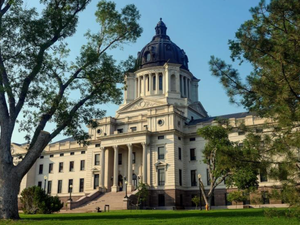NEW UNDERWOOD, S.D. – Despite being home to wide-open spaces and abundant sunshine, South Dakota ranks 47th in the nation for production of solar power and has lagged well behind other states for decades.
Less than a year ago, the only utility-scale solar farm in South Dakota was a 1-megawatt facility near Pierre, which became operational in 2016 and accounted for just 0.01% of the state's overall power generation.
But recent developments have brightened the outlook for future development of medium- and large-scale solar power projects.
Driven by new federal sustainable energy tax credits, a national mandate to move energy production away from coal and a desire by power companies to diversify their sources of energy, the state has seen increased interest in development of new solar farms and electricity transmission lines to generate and transport more solar energy in South Dakota.
Chris Nelson, a member of the South Dakota Public Utilities Commission, said he doesn’t expect solar power generation to become as widespread in the state as wind power has over the past decade.
But there is a new buzz about solar, especially with the launch last month of the Wild Springs Solar project east of Rapid City in New Underwood, now the largest solar farm in the state, he said.
“That really is a big deal because it’s the first large project here in South Dakota,” Nelson told News Watch. “We’re certainly in a period where there’s a lot of investigation of solar being done around the state. That is absolutely true.”
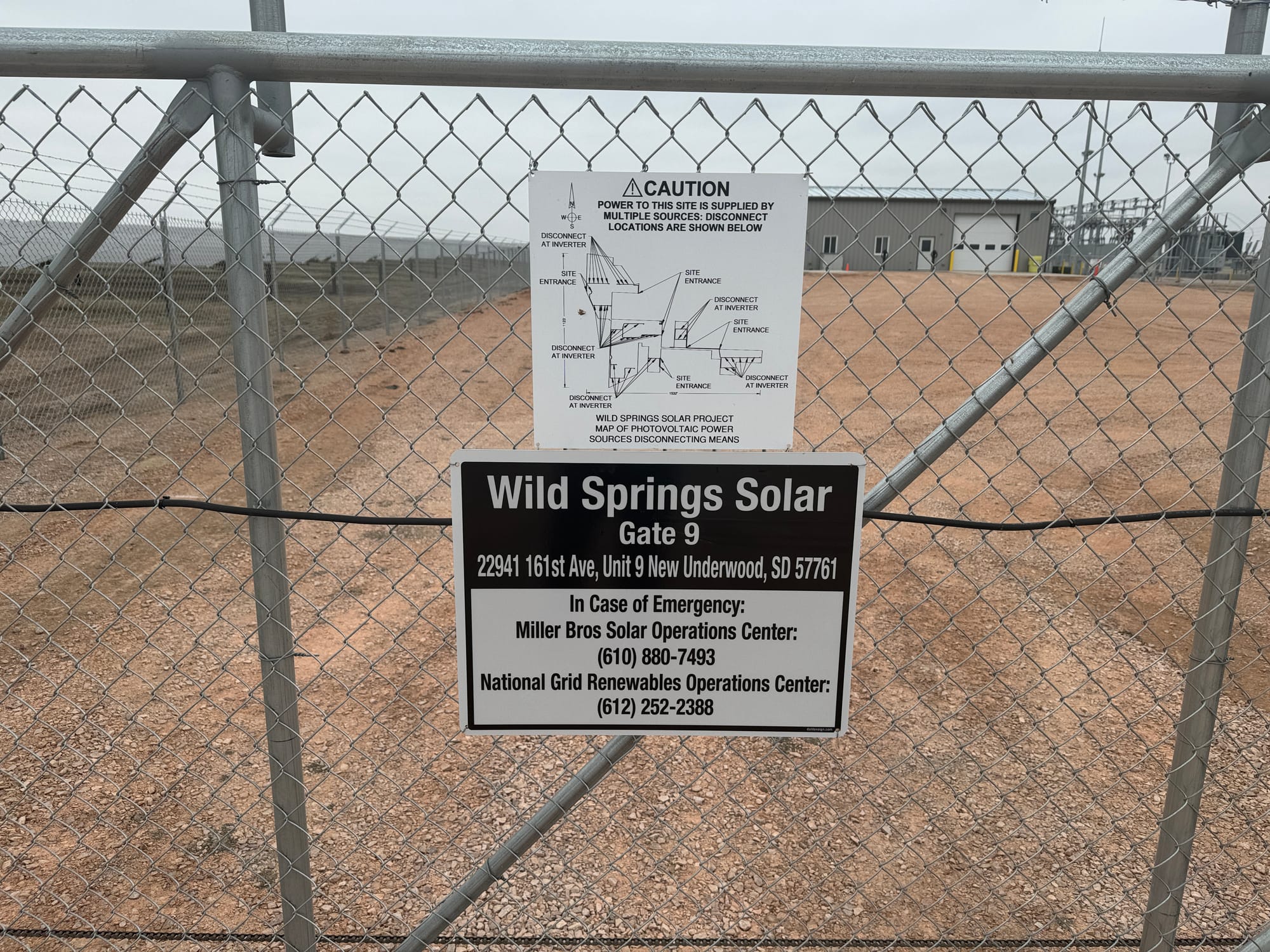
New solar projects coming online
The solar surge began in September 2023 when power began flowing from the 80-megawatt Fall River Solar facility near Oelrichs, southeast of Hot Springs. That project, owned by New York-based Greenbacker Renewable Energy, will provide enough electricity to power almost 18,000 households a year for customers of Rapid City-based Black Hills Energy, which is buying the electricity produced.
Another jolt forward came in March 2024, when the massive Wild Springs Solar facility began operating on nearly 2 square miles of prairie just south of New Underwood. That $190 million solar energy project, built and owned by National Grid Renewables of Bloomington, Minnesota, will produce up to 128 megawatts of energy that will be purchased by Basin Electric Power Cooperative of Bismarck, North Dakota. The grid is so large its gray solar panels are easily visible from Interstate 90, about 3 miles to the north.
On the east side of the state, a new 345-kilovolt transmission line expansion has been proposed to carry wind and solar power from Big Stone City to Becker, Minnesota, for service to communities across both states. Missouri River Energy Services (MRES) of Sioux Falls is a partner in the project that was announced in fall 2023.

MRES already has plans to build a 5-megawatt solar power generating facility on an 80-acre site south of Brookings that could begin generating power by 2025. That project could include up to 11,000 solar panels to power up to 1,100 homes per year.
The South Dakota PUC in 2020 granted approval for the proposed Lookout Solar Project north of Pine Ridge in Oglala Lakota County that could produce up to 110 megawatts of electricity once operational, though that project has stalled.
Only solar projects of 100 megawatts or larger require PUC approval in South Dakota, and there are no permit requests for solar projects before the commission at this time, Nelson said. However, he does anticipate there could be development of smaller solar projects in the near future.
“In conversations with people around the state, there’s probably a dozen different (solar) projects that are being talked about or looked at with various degrees of seriousness,” Nelson said.
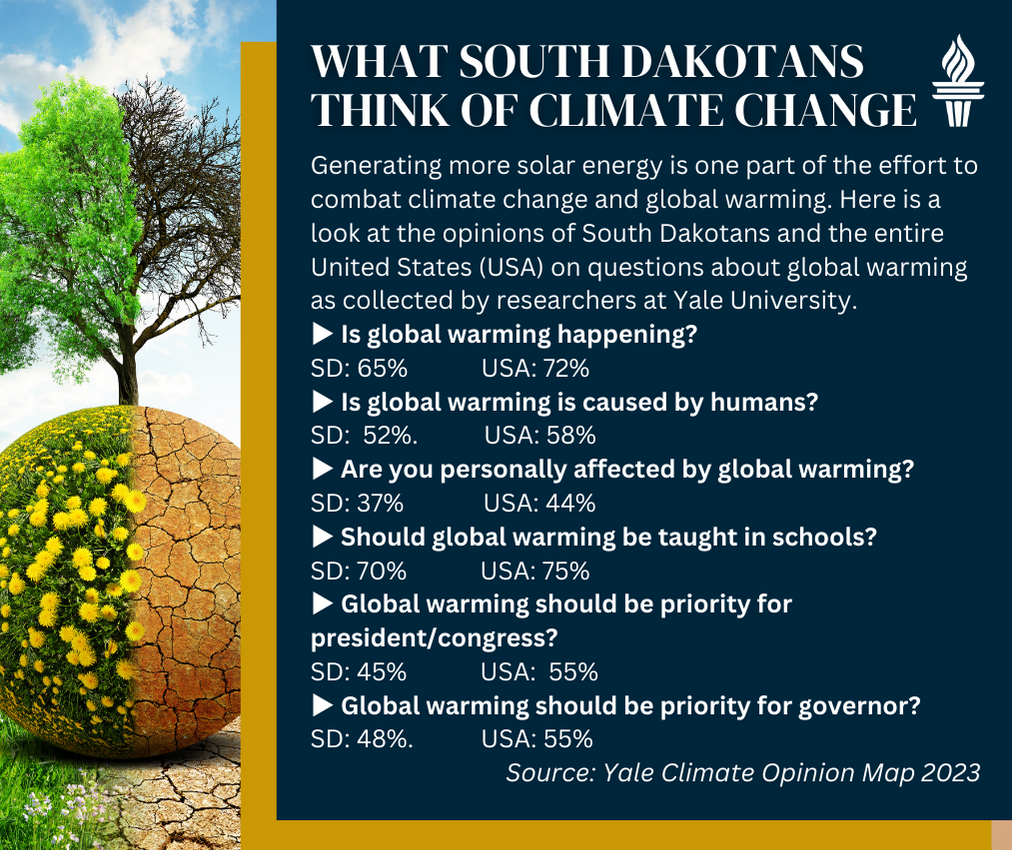
Power companies seek diversification
A new mantra of many power companies is that they want to take an "all of the above" approach to reduce reliance on fossil fuels while ensuring a steady supply of power, including from solar.
The phrase refers to a philosophy of diversification in which power companies are increasingly seeking a mix of consistent energy sources from coal, natural gas and hydro power while also adding more green energy from wind and solar, which are dependent on weather and are therefore less reliable.
"We have our integrated resource plan that looks to bring more renewables into our portfolio," said Lynn Kendall, community affairs manager at Black Hills Energy, which serves 1.3 million customers in eight states. "But overall, we are focusing on reliability, cost effectiveness and safety for our customers."
At Basin Electric, which serves 3 million customers across South Dakota and eight other states, that diversification has resulted in a dramatic shift in how it has obtained energy over roughly the past two decades, according to the company's 2022 annual report.
Basin received 84% of its power load from coal in 2000 and the remainder from hydro power, oil and diesel sources. None of it came from natural gas or wind. In 2022, the company received 39% of its energy from coal, 24% from wind, 17% from natural gas, and the rest from hydroelectric and other sources.

Andy Buntrock, vice president of strategic planning and communications for Basin, said the company is buying power from the Wild Springs Solar facility as a way to further diversify the sources of energy it receives and provides to its customers.
"We were early adopters in wind, and now we’re pioneers on the solar end of things," Buntrock told News Watch. "It helps with the consolidated mix of energy sources and is part of our 'all of the above' energy strategy."
Buntrock said Basin is under contract to buy 114 megawatts of the power generated at the 128-megawatt capacity Wild Springs farm. Basin recently put out another request for proposals to buy more energy and will consider solar power if an affordable, reliable opportunity arises, he said.
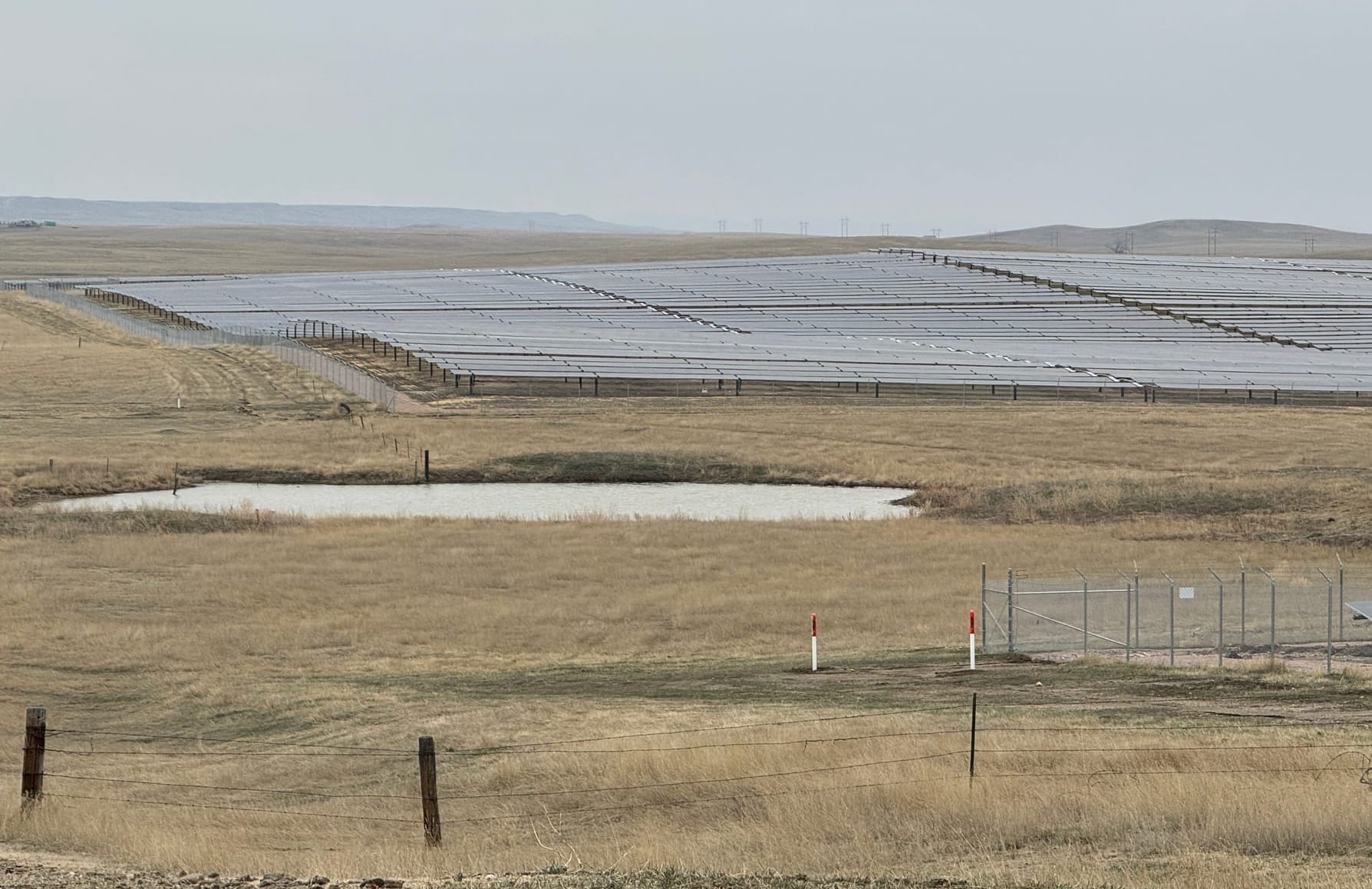
"Our membership is very clear that they want affordable and reliable power and we’ve got to figure out the recipe for that, which we believe is creating an all-around basket of sources to provide that affordability and reliability," Buntrock said.
Even as interest in solar and wind power continues to rise, and federal tax incentives make those power sources increasingly affordable, Basin is likely to maintain some energy sources powered by fossil fuels, Buntrock said.
"We can’t rely totally on one of those types of (renewable) energy because on a cold winter morning when it's cloudy and there’s no wind, we’ll still be keeping our members warm with natural gas and coal and diesel. And that’s just the way it is," he said.
Tax incentives driving solar growth
The tax incentive picture has brightened significantly in recent years to encourage more development of solar power, particularly on the federal level, said Tim Blodgett, vice president of member services and communications at MRES.
New tax credit programs can be “pancaked” with other loan or grant programs to allow credits of up to 60% on new investments, he said.
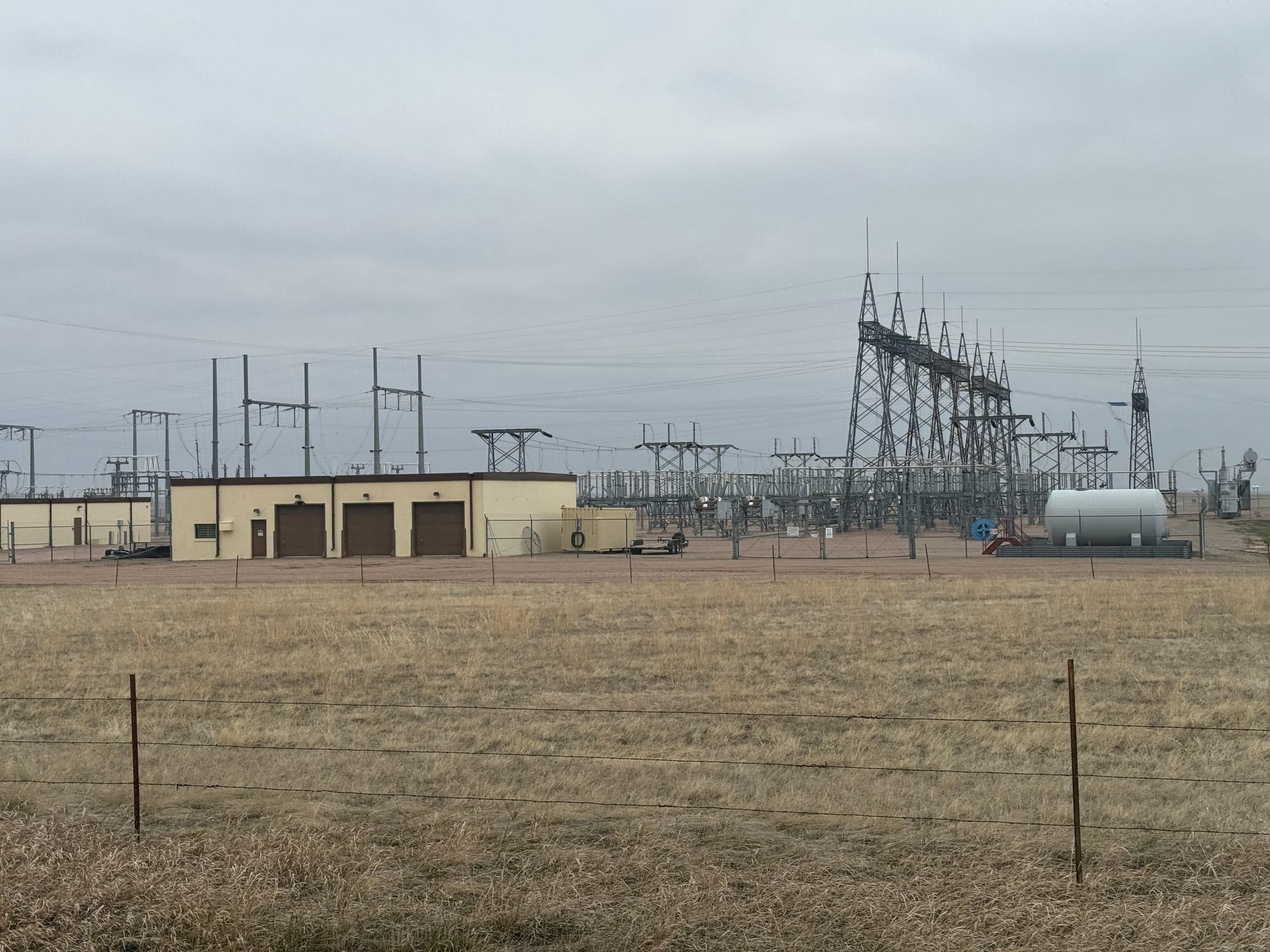
Recent tax law changes also have allowed not-for-profit energy companies, such as MRES, to receive direct-pay credits rather than sharing the tax credit value with private entities that build and own solar power facilities that supply the company, Blodgett said.
The Inflation Reduction Act assed by Congress and signed by President Joe Biden in 2022 includes $370 billion in tax credits and other support for clean energy initiatives, including solar.
While solar power still requires significant up-front investment, and power transmission remains a challenge, the new tax incentives helped level the playing field for solar, Blodgett said.
“There’s increased regulation that is making (solar) much more lucrative on the financial front,” he said. “When you think back 15 to 20 years, the federal tax credits were going to wind, and wind alone. But with these new incentives, solar can be competitively priced.”
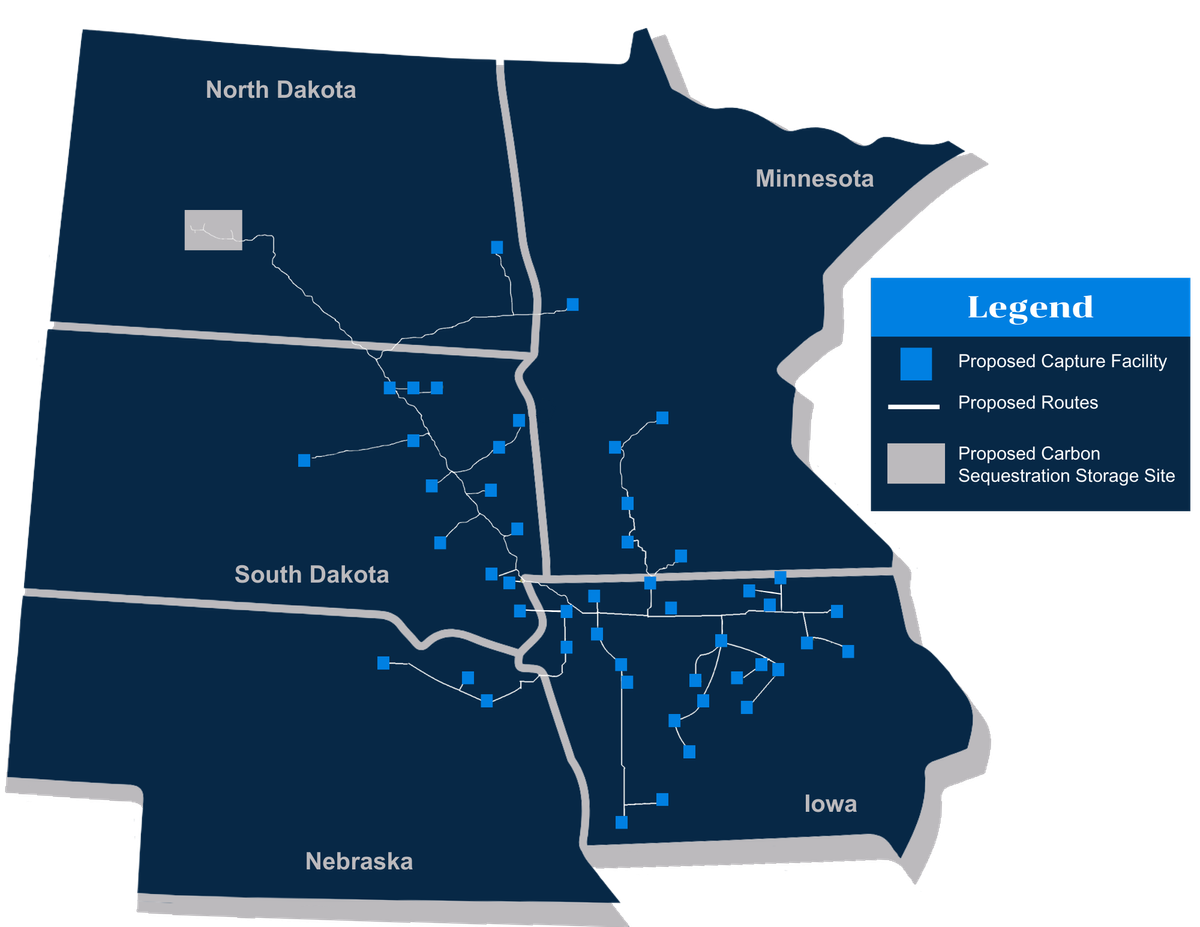
MRES, which is also developing a solar facility in Marshall, Minnesota, sees potential in smaller solar farms that can be operated “behind the meter,” Blodgett said. That strategy features solar facilities that can provide local power directly to communities and avoids long wait times to push the power onto larger transmission lines prone to congestion, particularly due to the rise of wind power generation in the Midwest and Great Plains.
"There’s a lot of piloting going on right now with solar from an operations standpoint and learning how it works into the market," Blodgett said. "This is all new territory, so we’re learning as utilities how to adapt and work in this new environment where we’re going to have more volatility in the power generation mix."
South Dakota passes on federal funding for solar
Gov. Kristi Noem has opted not to take part in opportunities from the federal government to expand solar power generation in the state.
Last year, South Dakota was one of six states that did not apply for funding under the $7 billion Solar for All federal initiative that provides grants to states, tribes and communities to expedite construction of residential solar projects in low-income areas.
The state also decided against applying for a $3 million federal Climate Pollution Reduction Grant that would have funded state efforts to reduce greenhouse gas emissions. Had that grant been awarded, the state could have qualified for part of a $5 billion plan to reduce greenhouse gas emissions and pollution.

Ian Fury, a spokesman for Noem, previously told News Watch that the governor reviews all federal funding opportunities and rejects some because they often come with "strings attached."
State a leader in wind, hydro power
South Dakota has a strong portfolio of in-state sources of renewable energy, with 84% of the state's energy production coming from wind and hydroelectric generation, according to the U.S. Energy Information Administration.
In 2022, wind provided 55% of the total in-state net power generation, a larger share than in all other states except Iowa, the EIA said. Other power sources in South Dakota include hydroelectric (29%), coal (10%), natural gas (6%), oil (0.3%) and solar (0.01%).
The state remains a national leader in production of ethanol, holding a top-five ranking, with 16 plants producing 34 million barrels a year, about 9% of the total produced in the U.S. last year, according to EIA data. Wind energy production has also climbed in recent years, with 2,800 megawatts produced at 23 wind farms in 2023.
South Dakota has a slightly above-average number of sunny days compared to the rest of the nation, according to data from the Centers for Disease Control and Prevention. When comparing a unit of energy per square meter, South Dakota ranks 25th in the nation for sunshine, with Arizona on top and Washington state at the bottom, the CDC said. And according to the KELO-TV weather team, Sioux Falls sees an average of 211 sunny days a year and Rapid City has 226 days of sunshine annually.
Beyond cloudy days, solar farms can be subject to problematic weather, such as hail causing major damage to panels at a Texas facility in March and in Scottsbluff, Nebraska, last June.
The EIA projected that South Dakota would see growth of 328 more megawatts of solar power generation over the next five years, which ranks 48th among all states in terms of projected increase. The best solar power opportunities are in the southwest quadrant of South Dakota, the EIA said.
Michael Heisler, M.D., a critical care physician at Avera Health in Sioux Falls, is also the president of the group SoDak 350, which seeks to educate and advocate for efforts to reduce the impacts of climate change. Greater investment in solar makes sense now because the cost of solar infrastructure and installation has fallen at a time when the need for more renewable energy has never been greater, he said.
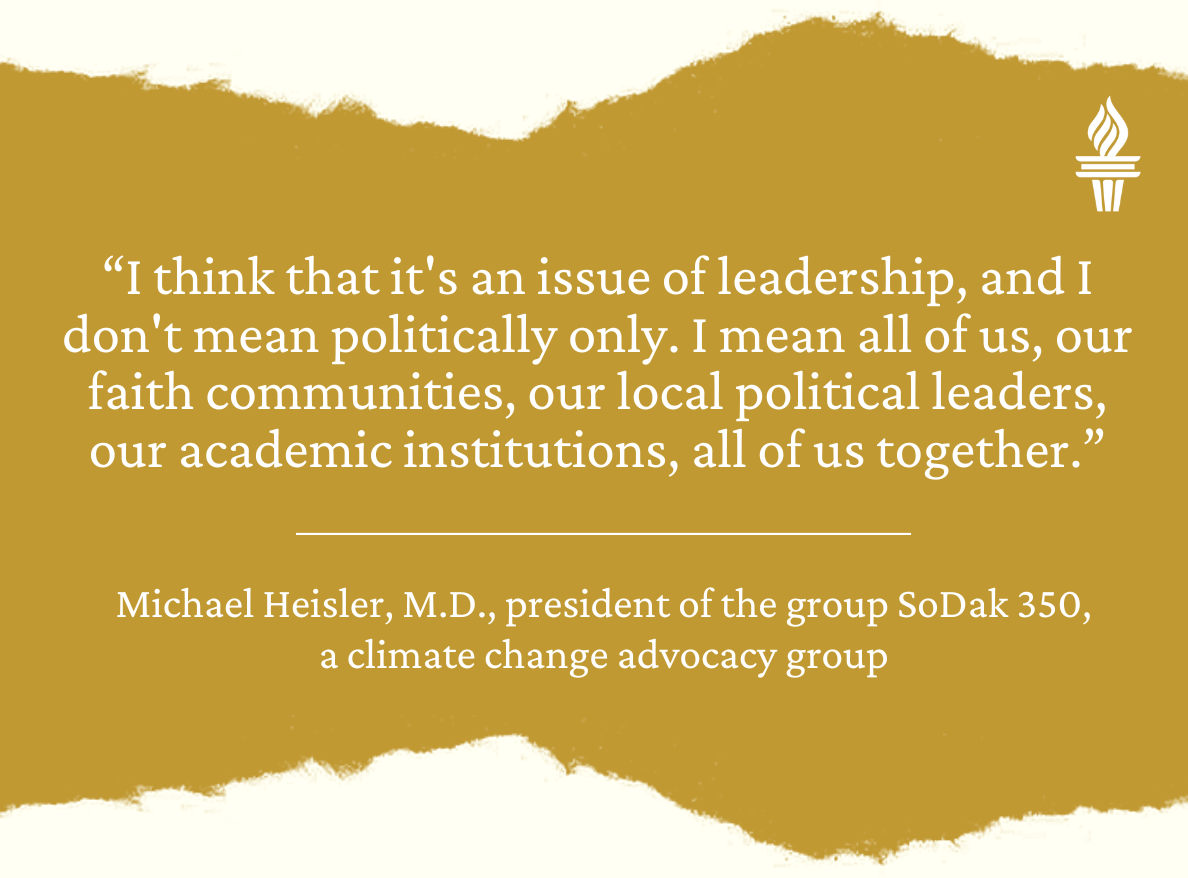
Stronger leadership is needed to support efforts to expand sources of renewable energy in the state, Heisler said.
"I think that it's an issue of leadership, and I don't mean politically only. I mean all of us, our faith communities, our local political leaders, our academic institutions, all of us together," he said. "It's just it's an issue of communication and exchange of information and opportunity, and the question really becomes, 'How can we all work together to maximize our opportunities?'"
For homeowners who want to explore solar as a way to reduce home energy costs, the PUC said it works best on rooftops facing south with a slope of 15 to 40 degrees.
Taxpayers might be eligible for a 26% federal tax write-off for qualifying projects. The state of South Dakota also provides a property tax exemption on the first $50,000 or 70% of assessed value of household solar power systems, whichever is greater, according to the PUC.
Unlike some other states, South Dakota does not have "net metering," a system in which a utility is required to buy power generated by its customers at the same price at which it sells electricity.
Consistent power sources still needed
The Wild Springs Solar farm provides a glimpse of the potential economic and environmental impacts solar can provide.
According to company documents, the project will offset 190,000 metric tons of carbon dioxide emissions per year and create energy equivalent to eliminating the exhaust of 42,000 vehicles for one year. It will also create $30 million in direct economic impacts and $12 million in new tax revenues over the next 20 years. The developer also has given $500,000 for the New Underwood School District to use over the next two decades. In all, 200 construction and operations jobs were created.
PUC Commissioner Nelson said that even as he expects the U.S. and South Dakota will see more solar and wind power projects being built, he doesn't believe that the American power grid can survive completely on the wind, sun and batteries alone to provide consistent electricity.
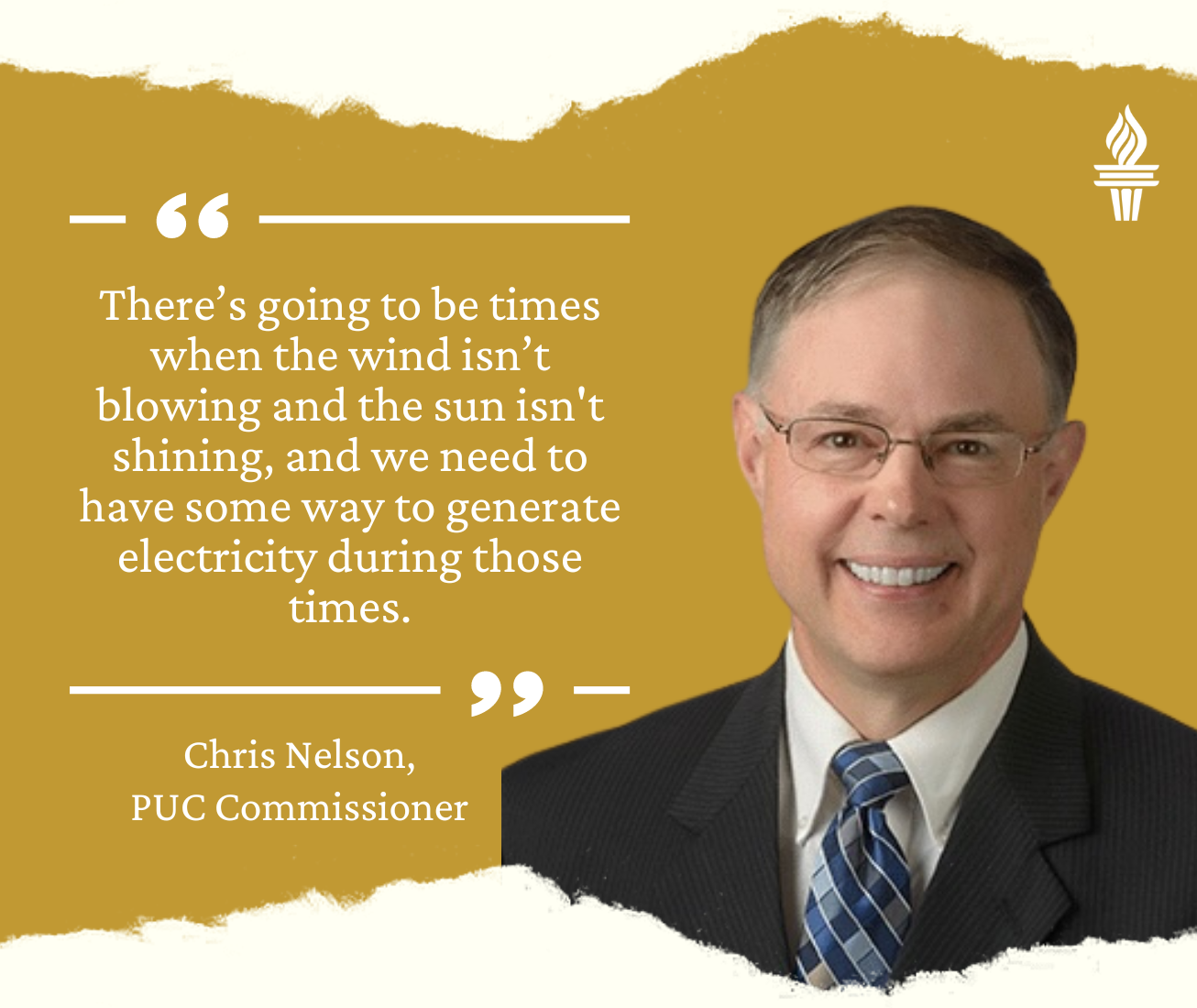
To ensure the safety of both the grid and people, Nelson said there will always be a need for electric power generated by coal, natural gas or other sources that don't let up when the weather turns still or cloudy.
"I do expect we’re going to see a pretty significant increase in the amount of solar and wind because we really need to keep a diversity of power generation sources," Nelson said. "But there’s going to be times when the wind isn’t blowing and the sun isn't shining, and we need to have some way to generate electricity during those times. When it’s 25 degrees below zero, you want your house to stay warm because at that point it’s a life and death issue, and not a convenience issue."
Contact Bart Pfankuch at bart.pfankuch@sdnewswatch.org.




